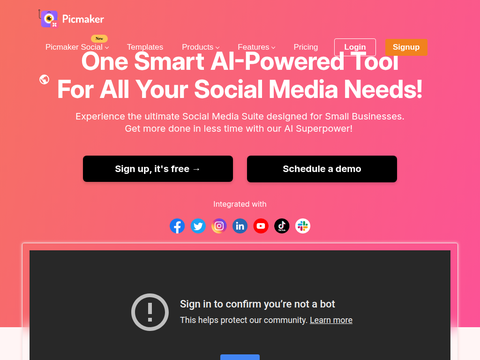Canva has unveiled its most significant product overhaul to date—the Creative Operating System—a comprehensive update that unifies design, AI, and marketing into a single, interconnected workspace.
The company describes this new platform as heralding the dawn of the “Age of Imagination,” where technology amplifies human creativity rather than replacing it.
“As access to knowledge becomes increasingly effortless, we believe we’re transitioning from the Information Age to the Age of Imagination,” said Melanie Perkins, Canva co-founder and CEO. She added that the company is “incredibly excited to launch our biggest release yet—the integrated Creative Operating System.”
Despite its name, this isn’t an operating system in the traditional sense. As co-founder Cameron Adams clarified in an interview with The Verge, “We considered several different phrases, and ‘operating system’ really resonated with us. It truly functions as one.”
At its core, Canva’s new system connects every facet of creative work—from design and video to branding and analytics—within a unified, AI-powered platform.
A Complete Overhaul of Design and Workflow Capabilities
Canva’s updated system integrates enhanced visual tools, AI intelligence, and brand-building features into a single environment. According to the company’s official announcement, it combines a “supercharged visual suite, world-first design AI, and powerful new ways to grow your business and scale your brand.”
Among the headline updates is Video 2.0—a rebuilt editor designed for creators seeking professional-grade video results without switching between apps. It offers AI-driven automated editing alongside manual control via a redesigned timeline.
The platform also introduces new email design capabilities, enabling teams to craft email campaigns directly within Canva and export clean HTML to tools like Mailchimp—a workflow enhancement long requested by marketers.
Canva Forms, a drag-and-drop tool for building surveys, RSVPs, and data collection forms, debuts with seamless integration into Canva Sheets. Rounding out the upgrades is “Canva Code meets Sheets,” which introduces interactive data widgets that empower users to build dashboards, calculators, and educational tools—all within a unified design-and-data workspace.
A Bold Bet on AI That “Understands” Design
Central to this launch is what Canva calls the “Canva Design Model”—an AI system the company claims is the world’s first purpose-built to comprehend the intricacies of design. Unlike generic image generators, it grasps layout principles, brand guidelines, and visual hierarchy to produce fully editable designs.
This model powers new capabilities such as generating entire editable designs from text prompts and instantly creating custom 3D elements and icons.
The advanced AI now drives key platform features. For instance, AI-powered design lets users generate complete, editable assets—whether social posts or videos—in seconds. Additionally, a new feature called Ask @Canva acts as an in-editor creative assistant: users simply tag @Canva in a comment to receive real-time suggestions, generate new visuals, or make smart edits without disrupting their workflow.
Canva Officially Enters the Marketing Arena
In what may be its most ambitious expansion yet, Canva is making a decisive move into marketing with the launch of “Canva Grow”—a dedicated suite for marketing teams that enables them to create ads, publish directly to platforms like Meta, and track performance—all without leaving Canva.
It also introduces an advanced “Brand System” that embeds a company’s logo, color palette, and fonts directly into the editor, ensuring all content automatically adheres to brand standards.
Furthermore, Canva announced that Affinity—the professional-grade design suite it acquired last year—is now completely free. This opens access to high-end photo editing, vector illustration, and publishing tools for everyone, with seamless integration into Canva for collaboration and sharing.
Serving over 260 million monthly active users and 95% of Fortune 500 companies, Canva is now positioning itself not just as a design tool, but as an end-to-end creative and marketing platform—aiming to rival both traditional office suites and professional creative software.








